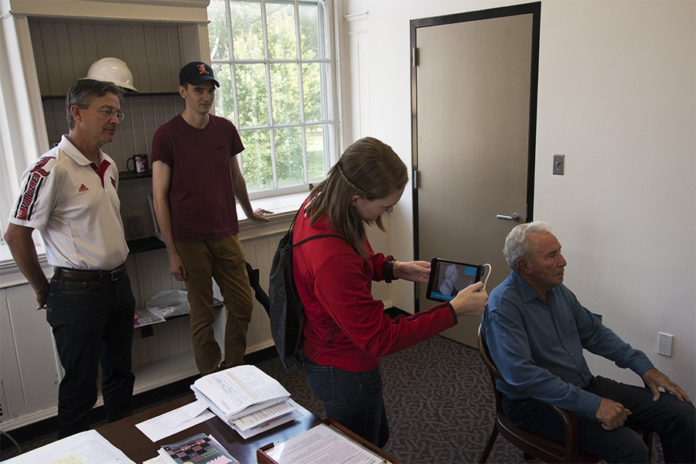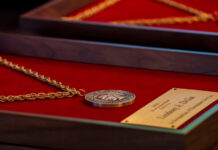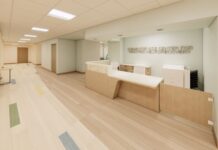
The Cardinal Football team wasn’t the only point of interest during last weekend’s ESPN GameDay appearance on campus. UofL’s Rapid Prototyping Center was contacted by the director of ESPN GameDay the day before the football game against Clemson and was tasked with printing a 3D bust of GameDay host Lee Corso for a segment highlighting UofL’s technology and student talent.
RPC manager Tim Gornet assigned students Kate Schneidau and Samuel Williams the opportunity to work with Corso, an experience they were eager to tackle.
A GameDay tradition, Corso wears the mascot head of his pick the central motivation of the challenge. Schneidau and Williams set out to construct a bust of Corso himself that could in turn wear a smaller version of the mascot head. They were initially prompted to work with metal as an additive.
Unfortunately they didn’t realize that metal prints, which can quickly (compared to traditional manufacturing) make extremely complex objects, actually take a long time to make and design and post process. So we quickly had to come up with something to print, and we had to switch to plastics because that was the only method that could be done in under 24 hours from start to finish,” Williams said.
Initially the plan was to superimpose a cardinal crest on his head, but that addition was scrapped because it looked too much like a shark fin, he said.
Schneidau and Williams were at a disadvantage with time, but excited for the challenge.
“This was the first time, for me, to use the scanning and modeling software. Before the bust could be built in out 3D printers we had to scan Mr. Corso’s head. After scanning Mr. Corso, we imported the scan into our modeling software and cleaned up any problems that occurred during scanning. This is where Samuel took over, as I mostly worked on the scanning,” Schneidau said.
Using a sculpting program called MeshMixer, Williams believes the scan was met with complication.
“Living things are much more difficult to capture because even small movements degrade the scan,” he said. “We only had time for one scan, so we didn’t notice until we had already left that most of Corso’s lips and eyes and nose were missing, so we had to add those later by hand with photos for reference. There is never really a perfect scan, so it requires a bit of time to smooth over rough edges and fill in holes.”
After that, he adds, it was as simple as figuring out what size they could print with the time left on their plastics machines. They ended up with about six different busts that finished on time.
Corso or Bust
Coordinating with Corso and ESPN GameDay allowed the students to meet Corso for about 10 minutes during the scan.
“Both my parents are alumni, so I knew who Lee Corso was. As I was the one scanning I was trying to contain my excitement so that I did not mess up the scanner’s work, afterwards my supervisor told me jokingly that he was watching to see if my hands started shaking. The process was very straightforward; we had Mr. Corso sit in a chair in the middle of the room and I, holding the scanner, walked around him” Schneidau said.
Though the portion of the process that involved Corso was brief, the print itself took a little more time, which meant that neither Scheidau or Williams were available to deliver the final product.
“We weren’t able to give the busts personally, but we dropped them off Saturday morning so that (Corso) could pick out his favorite color,” Williams said. “We didn’t get any of the duplicates back, so I can only assume he liked all of them.”
































